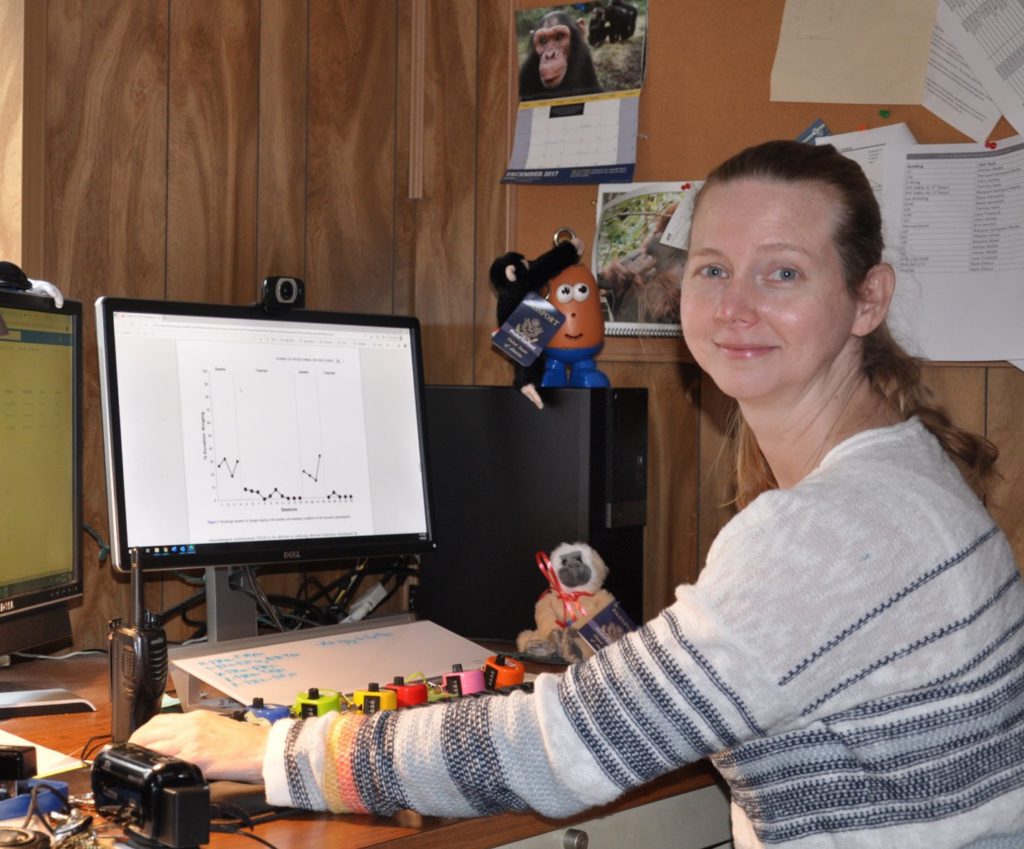
ASP Primate Welfare Award Winner (2021): Functional Analysis and Treatment of Disruptive Behavior in a Rhesus Macaque
This quarter’s Hot Topic in Primate Welfare features the work of Andrea Franklin, the winner of the 2021 American Society of Primatologists Primate Welfare Award. Ms. Franklin is a primate training specialist at Yerkes National Primate Research Center at Emory University. In her study, a functional analysis (FA) was conducted on a male rhesus macaque (Macaca mulatta) who engaged in disruptive behavior while positive reinforcement training was being conducted in the room and was impeding training. While we tend to think of reinforcers as being used to increase desired behavior, problem behaviors also have underlying reinforcers, and learning about those reinforcers can help in their treatment. FA is a method developed and used by behavior analysts in human clinical settings to identify possible environmental variables that reinforce undesired behavior, including self-injurious, aggressive, and disruptive behavior. FA is increasingly being applied to better understand the same behaviors in nonhuman animals, including primates, dogs, and cats. In this study, once the reinforcer was identified, this information was used to develop a function-based treatment plan that successfully reduced the behavior by more than 90%. To learn more about this research, watch the video presentation narrated by Ms. Franklin or check out the article in the Journal of Applied Animal Welfare Science.

References
- Dorey, N. R., Rosales‐Ruiz, J., Smith, R., & Lovelace, B. (2009). Functional analysis and treatment of self‐injury in a captive olive baboon. Journal of applied behavior analysis, 42(4), 785-794.
- Dorey, N. R., Tobias, J. S., Udell, M. A., & Wynne, C. D. (2012). Decreasing dog problem behavior with functional analysis: Linking diagnoses to treatment. Journal of veterinary behavior, 7(5), 276-282.
- Farmer-Dougan, V. (2014). Functional analysis of aggression in a black-and-white ruffed lemur (Varecia variegata variegata). Journal of applied animal welfare science, 17(3), 282-293.
- Fritz, J. N., Fletcher, V. L., Dyer, S. P., Carpenter, K. A., Skrbec, M. L., & Yankelevitz, R. L. (2021). Functional analysis and treatment of aggression exhibited by cats toward humans during petting. Journal of applied behavior analysis, 9999, 1-11.
- Hanley, G. P., Iwata, B. A., & McCord, B. E. (2003). Functional analysis of problem behavior: A review. Journal of applied behavior analysis, 36(2), 147-185.
- Iwata, B. A., Dorsey, M. F., Slifer, K. J., Bauman, K. E., & Richman, G. S. (1994). Toward a functional analysis of self‐injury. Journal of applied behavior analysis, 27(2), 197-209.
- Martin, A. L., Bloomsmith, M. A., Kelley, M. E., Marr, M. J., & Maple, T. L. (2011). Functional analysis and treatment of human‐directed undesirable behavior exhibited by a captive chimpanzee. Journal of applied behavior analysis, 44(1), 139-143.